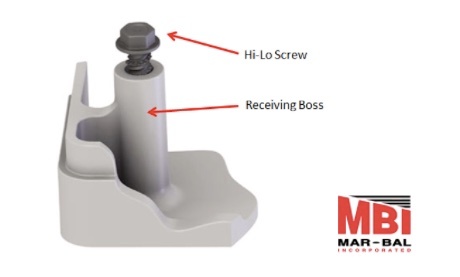When selecting a fastener for thermosets, engineers always think immediately of Hi-Lo Screws. A hi-lo screw is a thread-cutting screw consisting of a low and a high thread. The low thread is typically 30% of the height of the high thread, which is sharper and flatter than a standard thread. Hi-Lo screws are used in lower density materials so that the threads of the screw can “bite” into the material. Because of this cutting or biting action, removing and replacing this screw over time degrades the boss, and the strip torque of the screw decreases. Strip torque is a critical quality for the overall performance of the part; therefore, the estimated number of screw removals and replacements is vital. Although every application varies, a good rule of thumb is if the number is under 4, a hi-lo screw will hold up.

In the design of hi-lo screws, a number of factors are important:
Boss Hole Dimension
The hole diameter to the pitch diameter achieves the highest ratio of strip torque to driving torque.Boss O.D.
Testing demonstrates that 2.5 times the external screw diameter is the most robust design. If the wall of the boss is too thin, the insertion of the screw will crack the wall. Any thicker than 2.5 times, and the torque increase is negligible (thicker walls = longer cure time = more cost).Length of Engagement
Stripping torque is directly related to the length of engagement and plateaus at 2.5 times the pitch diameter of the screw.Consider what your customer’s intended function is before recommending a hi-lo screw. Be prepared with facts such as strip torque studies, strip torque loss after replacement, and recommended boss design.

